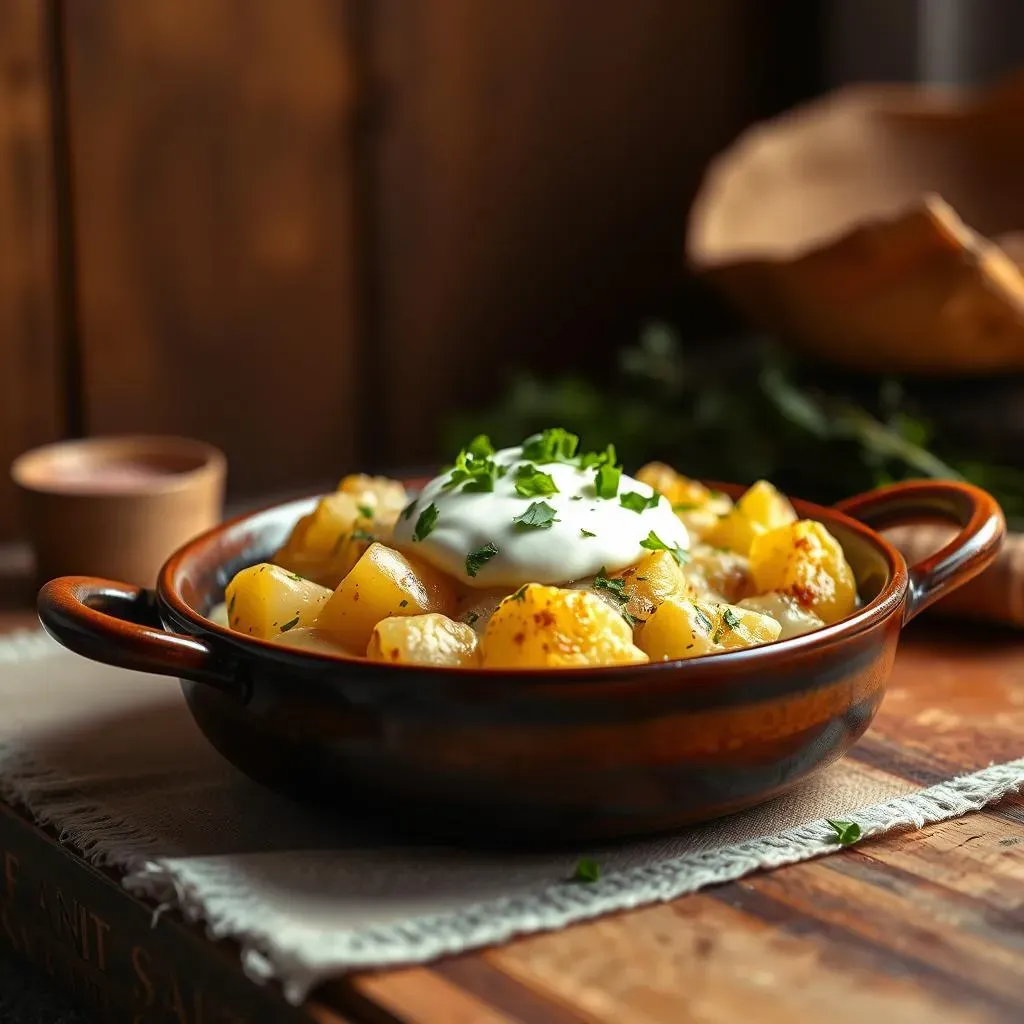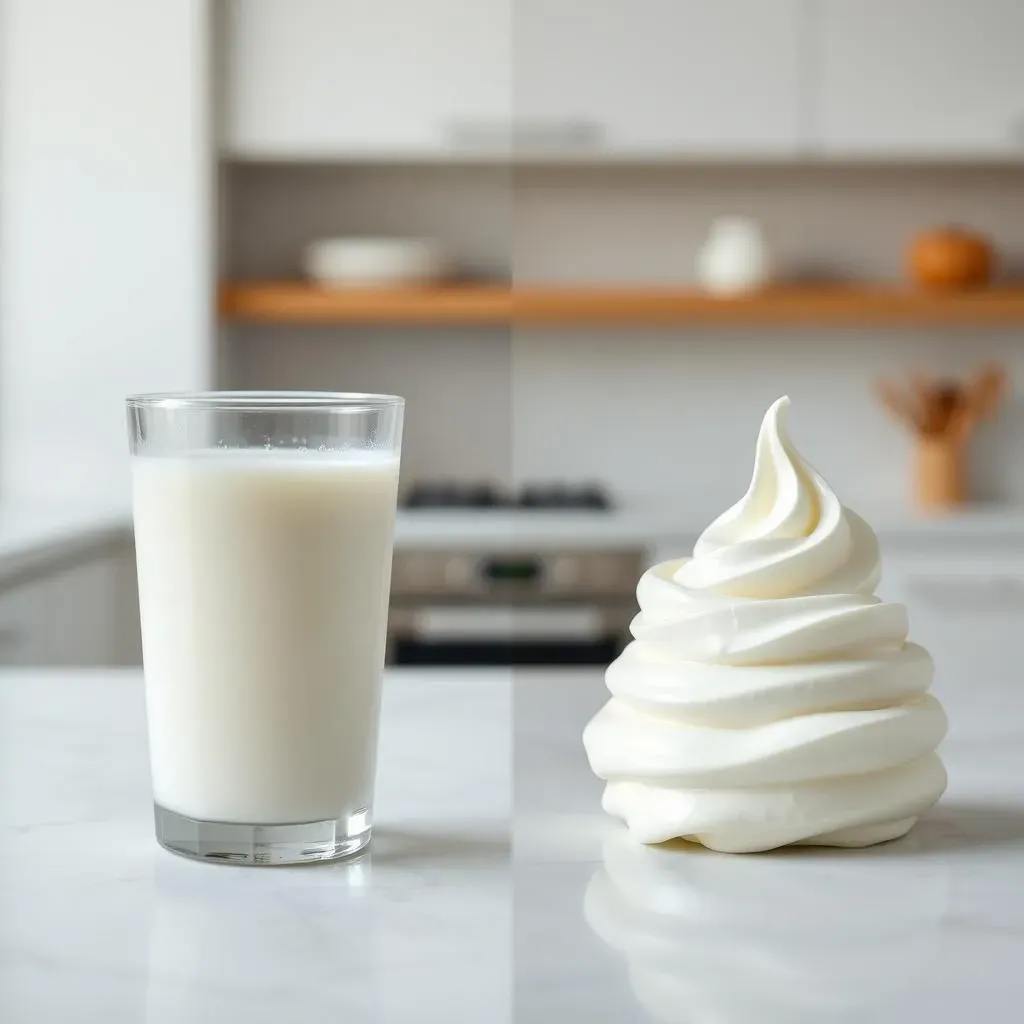Table of Contents
Ever stared into your almost-empty fridge, needing milk for a recipe but finding only a lonely container of sour cream? We've all been there. The question burning in your mind: "Can I substitute sour cream for milk?" This article answers that question comprehensively, guiding you through the complexities of swapping these two dairy products. We'll explore whether sour cream is a suitable replacement for milk in both sweet and savory dishes, examining the potential impact on texture, taste, and overall recipe success. We'll cover baking, where the leavening agents play a crucial role, and savory cooking, where moisture and richness are key considerations. Get ready to unlock the secrets of successful sour cream substitutions and discover how to adapt your recipes for a delicious outcome, even when your milk supply is low. Let's dive in and explore the surprising versatility of sour cream!
Can I Substitute Sour Cream for Milk in Baking?

Can I Substitute Sour Cream for Milk in Baking?
So, you're wondering if you can swap sour cream for milk in your baking adventures? It's a surprisingly common question, and the answer is...it depends! Sour cream isn't a direct, one-for-one replacement for milk in most baking recipes. Milk contributes moisture and acts as a solvent for dry ingredients. Sour cream, on the other hand, is thicker, richer, and has a tangy flavor. Using it directly might result in a denser, slightly sourer cake or muffin. However, with some careful adjustments, you can often achieve surprisingly good results. The key is understanding what milk does in a recipe and how to compensate for sour cream's differences.
Ingredient | Milk's Role | Sour Cream's Impact | Adjustment Strategy |
|---|---|---|---|
Milk | Moisture, Solvent | Adds richness and tang, reduces moisture | Reduce other liquids slightly; add a touch of extra leavening |
Baking Powder | Leavening agent | Can react with acidity of sour cream | Reduce baking powder slightly |
Baking Soda | Leavening agent | Works well with sour cream's acidity | May need to increase slightly |
Think of it like this: milk is the quiet, dependable friend who keeps things balanced. Sour cream is the flamboyant cousin who adds a lot of personality but might need a bit of reigning in. For example, if a recipe calls for one cup of milk, you might try substituting ¾ cup of sour cream and ¼ cup of buttermilk (or milk) to maintain the moisture level. This helps to balance the richness and tang of the sour cream.
- Start with a small substitution to test the recipe's behavior.
- Always adjust based on the specific recipe and your desired outcome.
- Don't be afraid to experiment! Baking is a science, but it's also an art.
Using Sour Cream as a Milk Substitute in Savory Dishes

Using Sour Cream as a Milk Substitute in Savory Dishes
Now, let's talk savory! Substituting sour cream for milk in savory dishes is often easier than in baking. The tangy flavor can actually enhance certain recipes, adding a creamy richness that plain milk might lack. Think creamy potato dishes, decadent cheese sauces, or even certain soups. The key difference here is that you're less concerned about leavening and more focused on texture and flavor. Because sour cream is thicker than milk, you may need to thin it out with a little water or broth to achieve the desired consistency. Start by replacing about half the milk called for in the recipe with sour cream. Taste and adjust from there!
- Creamy potato dishes (mashed potatoes, scalloped potatoes): Sour cream adds a lovely tang and richness.
- Cheese sauces (for pasta, vegetables): The creaminess complements the cheese beautifully.
- Soups (cream-based soups): A dollop of sour cream can add body and flavor.
- Dips (French onion dip, spinach artichoke dip): Sour cream is a classic base for dips.
Remember, though, that sour cream's tanginess will affect the overall taste. If you're using it in a recipe that requires a neutral flavor profile, you might want to adjust other seasonings accordingly. For instance, if you’re making a creamy tomato soup, you might reduce the amount of added salt or acid to compensate for the sour cream's tang. It’s all about finding that perfect balance. Experimentation is your friend!
Savory Dish | Milk Replacement Ratio (Sour Cream : Water/Broth) | Flavor Considerations |
|---|---|---|
Mashed Potatoes | 1:1 (or slightly less sour cream) | Adjust salt based on sour cream's tang |
Cheese Sauce | 1:2 (sour cream: water/broth) | May need to slightly reduce other strong cheeses |
Creamy Tomato Soup | 1:3 (sour cream: broth) | Reduce added salt or acid |
Can I Substitute Sour Cream for Milk? Understanding the Differences and Adjustments

Can I Substitute Sour Cream for Milk? Understanding the Differences and Adjustments
Understanding the Fundamental Differences
So, let's get down to brass tacks: milk and sour cream are *not* the same thing. Milk is a liquid, primarily water with dissolved sugars and fats. Its role in recipes is multifaceted: it provides moisture, helps bind ingredients, and contributes to the overall texture. Sour cream, on the other hand, is a thicker, more viscous dairy product. It's essentially cultured cream, meaning bacteria have fermented the cream, adding acidity and a characteristic tang. This tanginess and thicker consistency are the main reasons why a direct swap isn't always ideal. Think of it like trying to replace water with yogurt in a smoothie – it'll work, but the result will be significantly different.
Characteristic | Milk | Sour Cream |
|---|---|---|
Consistency | Liquid | Thick, creamy |
Fat Content | Variable (skim, whole, etc.) | Higher fat content |
Acidity | Neutral | Tangy (acidic) |
Role in Recipes | Moisture, binding, texture | Richness, tang, can act as a binder |
Making Successful Substitutions: Tips and Tricks
The key to successfully substituting sour cream for milk lies in understanding how to compensate for the differences. Because sour cream is thicker and tangier, you'll likely need to adjust other ingredients to maintain the desired texture and flavor. For instance, you might need to add a bit more liquid (water, broth, or buttermilk) to thin out the sour cream, or reduce the amount of other acidic ingredients in the recipe. The fat content is also important; sour cream's higher fat content can impact the final product. In baking, you might reduce the amount of butter or oil slightly. In savory dishes, the extra richness might be a welcome addition, but you might still want to adjust the seasoning to account for the tang. Remember, experimentation is your best friend! Start with small substitutions and taste-test as you go. Don't be afraid to tweak the recipe until you achieve the desired results.
- Always start with a smaller substitution ratio (e.g., ½ milk replaced with sour cream) to assess the impact.
- Adjust liquids to compensate for sour cream's thickness.
- Consider the recipe's other ingredients and adjust seasonings accordingly.
- Taste-test frequently and adjust as needed.